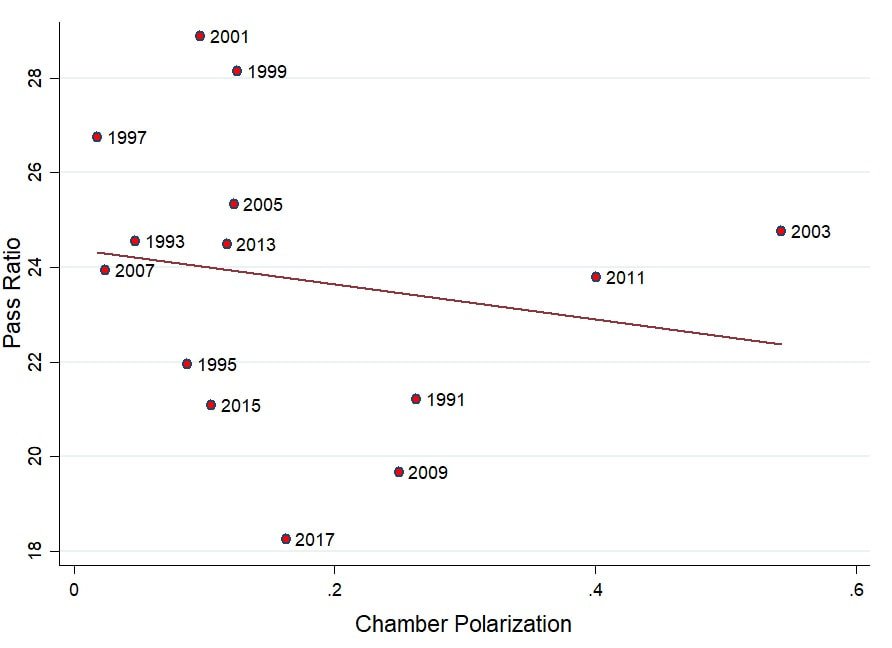|
A Tale of Two Chambers The epic levels of distrust between the Texas House and Senate (exacerbated by personal tension) has shaped many of the state’s legislative sessions, especially the 85th regular session. Chamber differences, however, are as old as the Republic itself. The first Congress of the Republic was tasked with the responsibility to select a site for a permanent capital. Predictably, House and Senate committees failed to agree – the House preferred Nacogdoches and the Senate preferred San Jacinto. A joint vote of both chambers was called and Houston was eventually selected (see note!). Is this friction between the chambers producing less legislation? Sort of. At least partially. The graph below displays ideological differences between the House and Senate of ideal point estimates for members of each chamber from 1991 to 2017 who voted in the majority and the percentage of bills passed out of those introduced.* In essence, the measure captures chamber differences in the ideologies of those voting in the majority and how bipartisan (scores around .5) or extreme (scores around 0 or 1) the legislation voted on was. The 85th (2017) session wasn’t as ideologically split by chamber as others (like the 78th session in 2003, which precipitated special sessions where Democrats fled the state to break a quorum), but pass ratio was much lower. The downward slope of the linear fit of the data reveal a modest effect of chamber polarization on overall legislative productivity.
These are mass indicators (overall pass rates), so we miss the nuance on specific important legislation (ie, the bathroom bill). Also, the chambers don’t necessarily vote on the same issues. It does give us an average indicator of how chamber differences in the ideology of legislation may dampen overall output. * Data nerd stuff: The ratio of introduced to passed bills is calculated as the total bills passed out of those introduced. Ideal point differences were calculated using the mean ideal point of those who voted in the majority and taking the absolute value difference between the chambers. Ideal point estimations from Shor and McCarty ideological scores, provided generously by Boris Shor. The absolute value of the difference between House and Senate members was then calculated. Note: Check out the great A Political History of the Texas Republic, 1836-1845 by Stanley Siegel for more fascinating detail. Comments are closed.
|
BR
Brandon Rottinghaus is a Professor of Political Science at the University of Houston Archives
June 2019
Categories |
Proudly powered by Weebly

 RSS Feed
RSS Feed